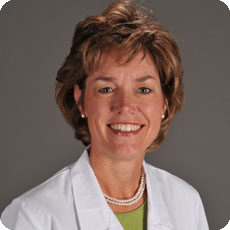Heart murmurs and children
What ‘lub-shhh-dub’ means when a cardiologist listens
“So can you see it?”
 I can’t tell you how many times I’ve heard this from anxious parents as their child is having his echocardiogram done. In reality, a murmur is something that is heard, not seen.
I can’t tell you how many times I’ve heard this from anxious parents as their child is having his echocardiogram done. In reality, a murmur is something that is heard, not seen.
In a normal heart, the valves make noises as they close, the classic “lub-dub” attributed to normal heart sounds. A murmur is an extra sound, “lub-shhh-dub.” Most of the time the murmur is innocent or functional, some may call it benign.
Innocent murmurs are simply sounds we hear as blood flows through a normal heart. More than two-thirds of children with normal hearts will have a murmur at some point in their life. There are classic innocent murmurs that occur at various times throughout a child’s life, and usually they go away on their own over time.
Aside from these are the pathologic murmurs, or sounds that occur because there is a problem with the heart, maybe a valve that isn’t working properly, a hole in the heart, or a vessel that is narrowed.
Typically there are characteristics that help distinguish innocent murmurs from pathologic murmurs. Louder, more harsh murmurs are more characteristic of pathologic murmurs. The timing that the murmur is heard is also important. Innocent murmurs are typically heard when the heart is squeezing (this is a systolic murmur). In the case of innocent murmurs, there is usually no need for further evaluation. Innocent murmurs don’t “progress” to pathologic murmurs. There is no need for activity restrictions and no need for antibiotics when the child goes to the dentist. In the case of pathologic murmurs, follow up, activity restrictions, and whether the patient needs antibiotics when he or she goes to the dentist all depend on what is causing the murmur.
 Having said this, not all systolic murmurs are innocent. Murmurs heard when the heart is relaxing (diastolic murmur) are usually pathologic.
Having said this, not all systolic murmurs are innocent. Murmurs heard when the heart is relaxing (diastolic murmur) are usually pathologic.
An echocardiogram is a test that helps us evaluate the heart in the event that the murmur sounds concerning. The probe, or camera, sends ultrasound waves toward the heart . This time it is about what we see. The waves bounce off solid structures and the machine organizes the returning signals into a 2D picture, which is displayed on the screen. The study also uses color signals to help determine the direction of flow, and Doppler signals to determine how fast the blood is traveling across different areas of the heart.
The cardiologist uses all of this information to determine if there is a problem and a treatment plan for the child begins. And to think it all begins with those first anxious moments of listening to a child’s heart.
About the author
Deborah Schutte, M.D., is the medical director of Cardiology at the Cook Children's Heart Center. The cardiology team at Cook Children's has extensive experience in the diagnosis and treatment of pediatric heart care. They know the unique requirements of treating the growing hearts of children, including those with extremely rare and difficult conditions. Our areas of expertise include cardiac surgery,interventional cardiology, adult congenital cardiology, electrophysiology, cardiac testing and imaging,echocardiography, fetal echocardiography and cardiac anesthesiology.
